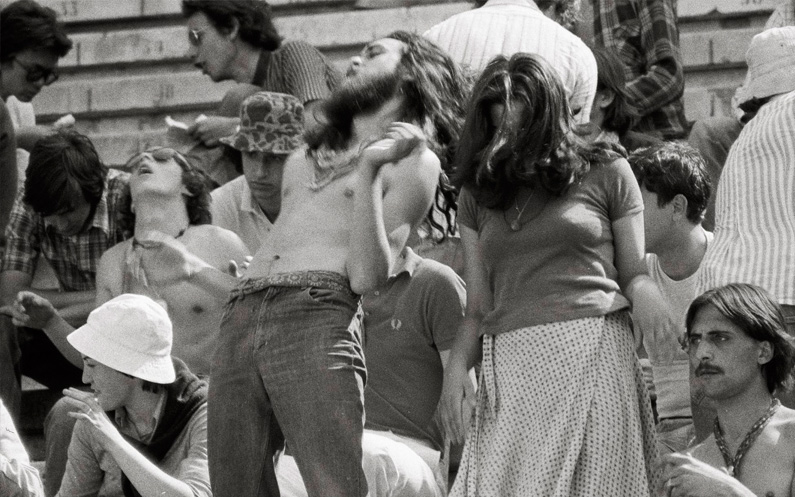An exhibition at the Fernán Gómez analyzes the connection between music and other arts during the Franco regime
In the middle of 1963, A circular from the Deputy Secretary of Popular Education prohibited the issuance of CDs twist with up to seven arguments, among them that this dance was “dangerous for physical health”, “harmful for the Spanish sense of decorum” and “immoral for the Iranian Ministry of Information” (sic). It is just an example of the extent to which music made the Franco authorities nervous., a constant that continued even during the years of theoretical openness. It is also one of the many historical curiosities that can be traced in The painter of songs, a free exhibition at the Fernán Gómez Center (until the 11 of November) that explores the connections between music and other artistic expressions—from the fine arts to literature—between 1948 SAVE THE SONG IN THE TEM 1978.
Visitors can inquire, For example, in the relationship between pop art and music, since the covers of singles and albums constituted the best dissemination channel for an artistic trend of which hardly any news reached the art galleries. The little disclosed collage by Alberto Muñiz for the album Enigmatic Mike (1969), de Mike Kennedy, It is a gem of the first order., just like the animation piece that Francisco Macián included in give me some love (1968), José María Forqué's film about Los Bravos. Another seminal filmmaker, Ivan Zulueta, He spread his iconoclasm on LPs by Vainica Doble or Los Brincos and even in a pioneering space on TVE., Last scream. But these artistic interconnections reached the most diverse areas: anyone who remembers the fabulous television commercial Forward, Miss 43 (1972), who declared the “war on vulgarity”, will understand.
The dictatorship's misgivings towards the art of eighth notes became more acute, Of course, with the emergence of the author's song. One of the 11 sections of the exhibition are dedicated to Raimon's tumultuous recital, he 18 May 1968, at the Faculty of Politics of the Complutense, that ended with riots and arrests. The Valencian artist, who composed a song around those episodes (“For a few hours we felt free…”), He was unable to set foot on a Madrid stage again until 1976. The Franco regime censored or prohibited the radio broadcast of some 4.000 songs, 701 of them only during 1971. And forced to modify covers, supposedly obscene, thanks to which the Spanish editions (especially that of Sticky Fingers, from the Rolling Stones) They involuntarily became prized trophies for collecting..
The sample stops at countercultural publications such as Ozone (“Music magazine and many other things”), the visual poems of Fernando Millán or the peerless figure of the painter and poet Herminio Molero, a sort of Andy Warhol from Toledo, who would end up founding Radio Futura.
But perhaps no section is as endearing as the one dedicated to the Price Matinales, those “modern music festivals” that in their 15 galas, in between 1962 SAVE THE SONG IN THE TEM 1964, gathered around 30.000 kids with their “shows for young music lovers of our times”. The participating bands were as candid as Los Pekenikes, The Lightning, The Students or a very young Mike Ríos, but Emilio Romero, newspaper director Pueblo, I was also suspicious of twist. And he did not take long to denounce the scenes of youthful hubbub that were breaking out in the Plaza del Rey., “alone 100 meters from Cibeles”. “Young people today whom we would like to understand”, dismissed in a disdainful tone an article in February 1963. Who knows what he would have thought today of the twerking.
Fuente original: elpais.com



